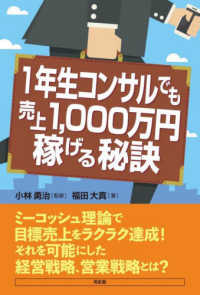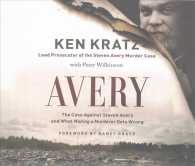Full Description
Focusing on runyege, the main traditional performance genre of the Banyoro and Batooro people, this book explores the entanglement of traditional music, dance, and theater with gender and postcolonialism in Western Uganda.
Drawing on archival research and extensive fieldwork in the regions of Bunyoro and Tooro, Linda Cimardi examines the connection between traditional performing arts and gender in western Uganda. The book focuses on runyege, the main genre of the Banyoro and Batooro people, exploring its different components of singing, instrument playing, dancing, and acting and identifying their complex relationships to gender models and expressions. Today mainly performed at Ugandan school festivals and by semiprofessional ensembles, repertoires like runyege adhere to stage conventions that have developed over several decades. Some of these conventions are powerful devices allowing the actors involved (performers, teachers, students, adjudicators, and audiences) to collectively shape an image of local culture grounded in a gender binary that is perceived as traditional. At the same time, stage conventions are exploited by some performers to negotiate their gender identities and expressions in unconventional ways, thus challenging hegemonic gender models. Moving between analysis of historical recordings, oral accounts, and present-day fieldwork data and experiences, the book engages in a comprehensive analysis of the postcolonial entanglement of arts and gender.
Audio and video recordings presented in the book can be accessed on the book's companion website, http://hdl.handle.net/1802/37373.
Contents
List of Illustrations
Foreword by Samuel Kahunde
Acknowledgments
Note on Language
Note on the Musical Examples
Note on Online Audio and Video Material
Prelude: Encountering Local Culture in Western Uganda
Introduction: Approaching Gender and Performing Arts in Bunyoro and Tooro
1. "Traditional Dance Preserves Culture and Shows People How to Behave": Runyege, MDD, and Gender
2. Singing Marriage, Runyege, and Labor
3. "Women Aren't Supposed to": Instrument Playing in the Past and Today
4. Shaking the Hips, Stamping the Feet: The Runyege Dance
5. Narrating and Representing Local Culture: Theater in Songs and Dances
6. Trans-Performing and Morality in Cultural Groups
Postlude: Gendering Culture
Appendix I. Glossary of Terms in Runyoro-Rutooro
Appendix II. Historical Recordings from Bunyoro and Tooro
Author's Interviews
References
Index








